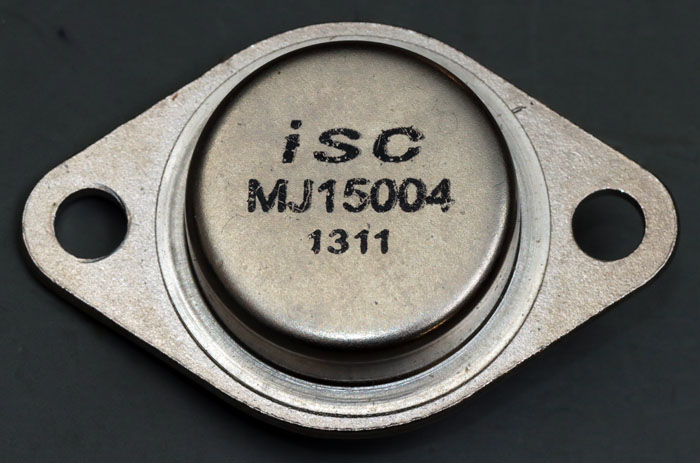
The PNP transistor MJ15004 is the complementary type to the MJ15003. The two transistors are optimized for linear operation. The MJ15004 blocks up to 140V and conducts up to 20A (collector) and 25A (emitter) respectively. Up to 250W of power dissipation can be dissipated through the package with its thermal resistance of 0,7°C/W. The cut-off frequency is at least 2MHz. The present model is from Inchange Semiconductor.
I had two components that failed due to oscillations in the same application, a linear regulated power supply.
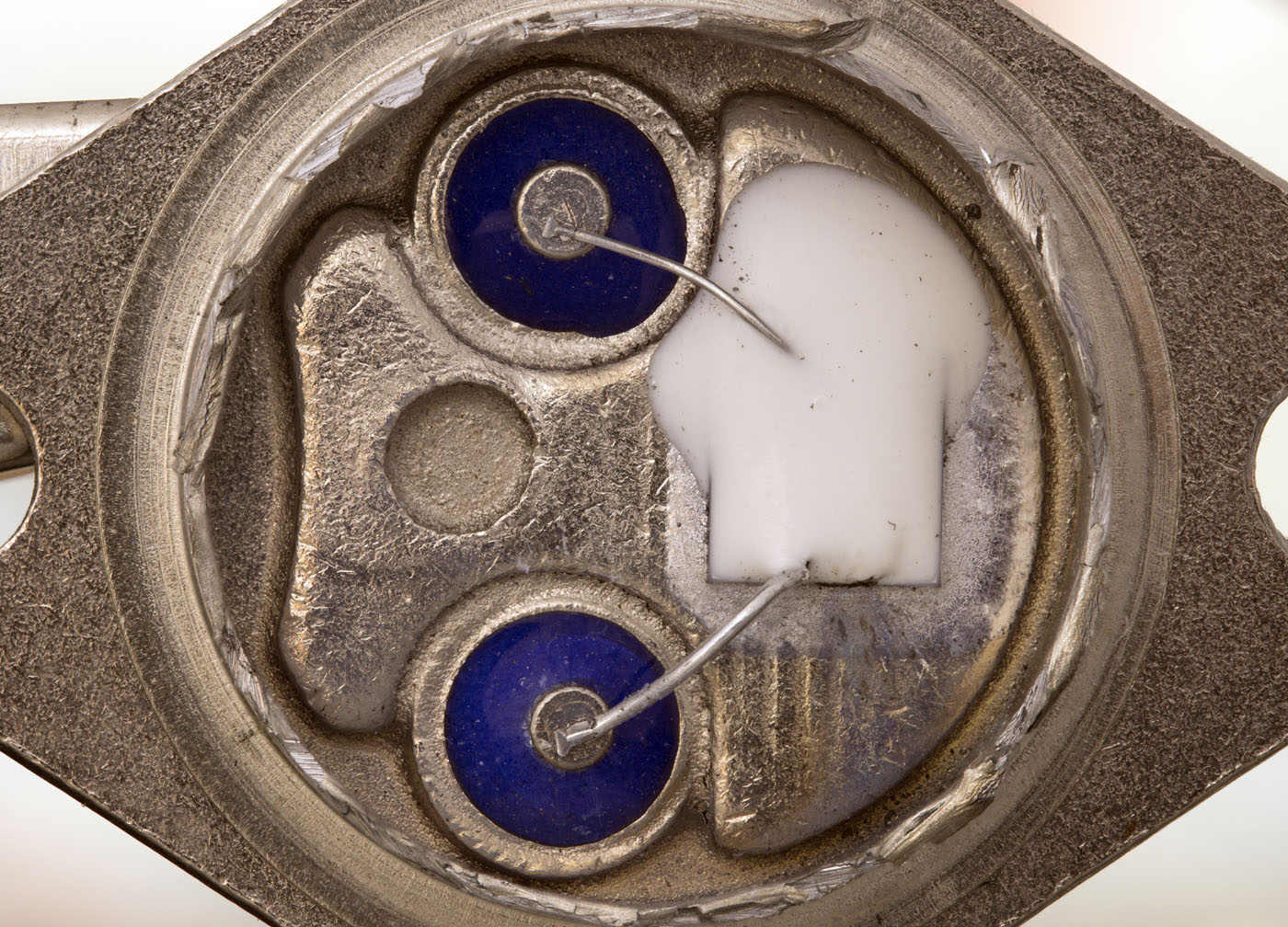
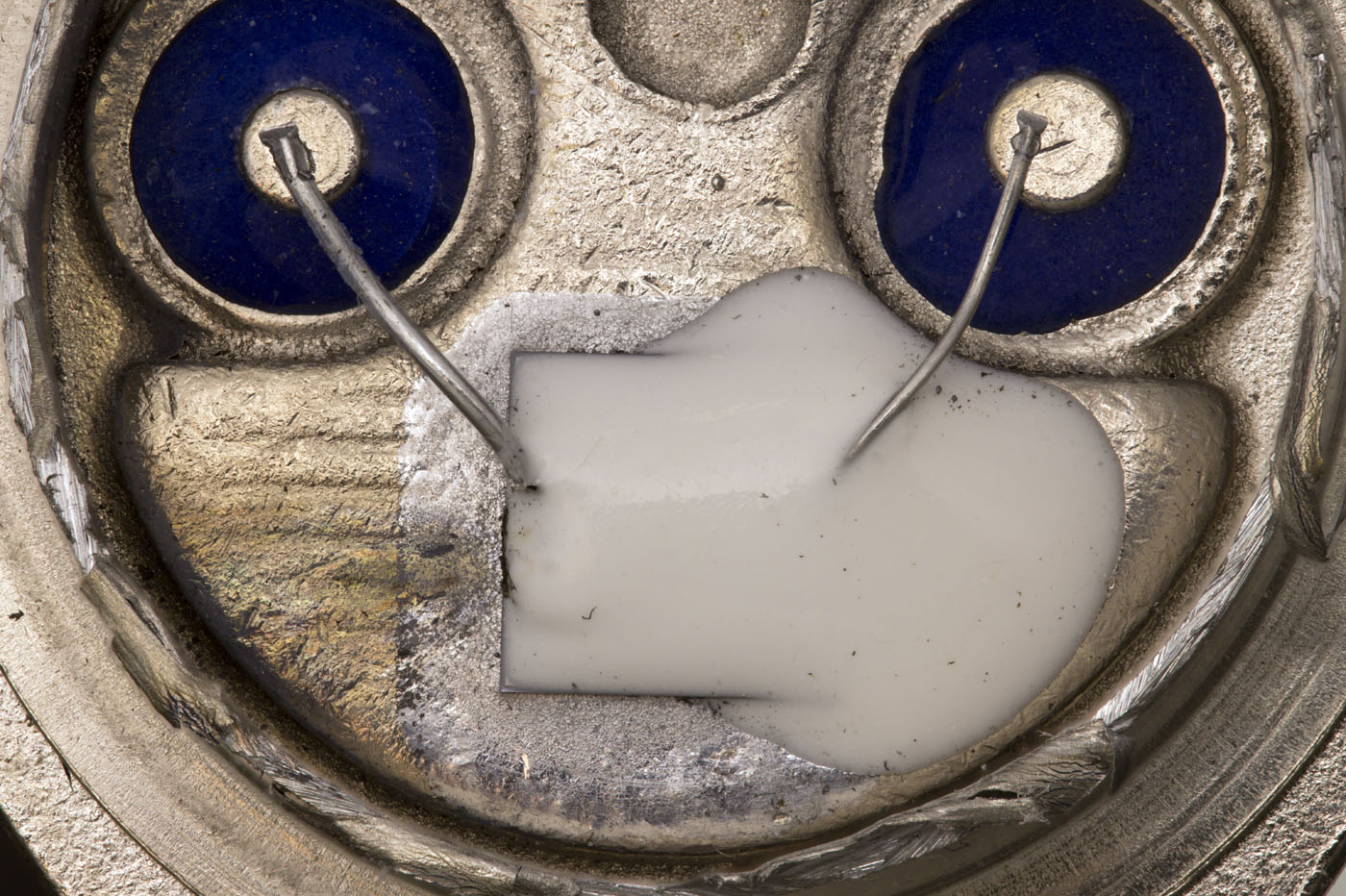
In the case there is a large heatspreader. The die is protected with a white potting, which is often found in Chinese TO packages. The bondwire of the emitter is lager than for the base.
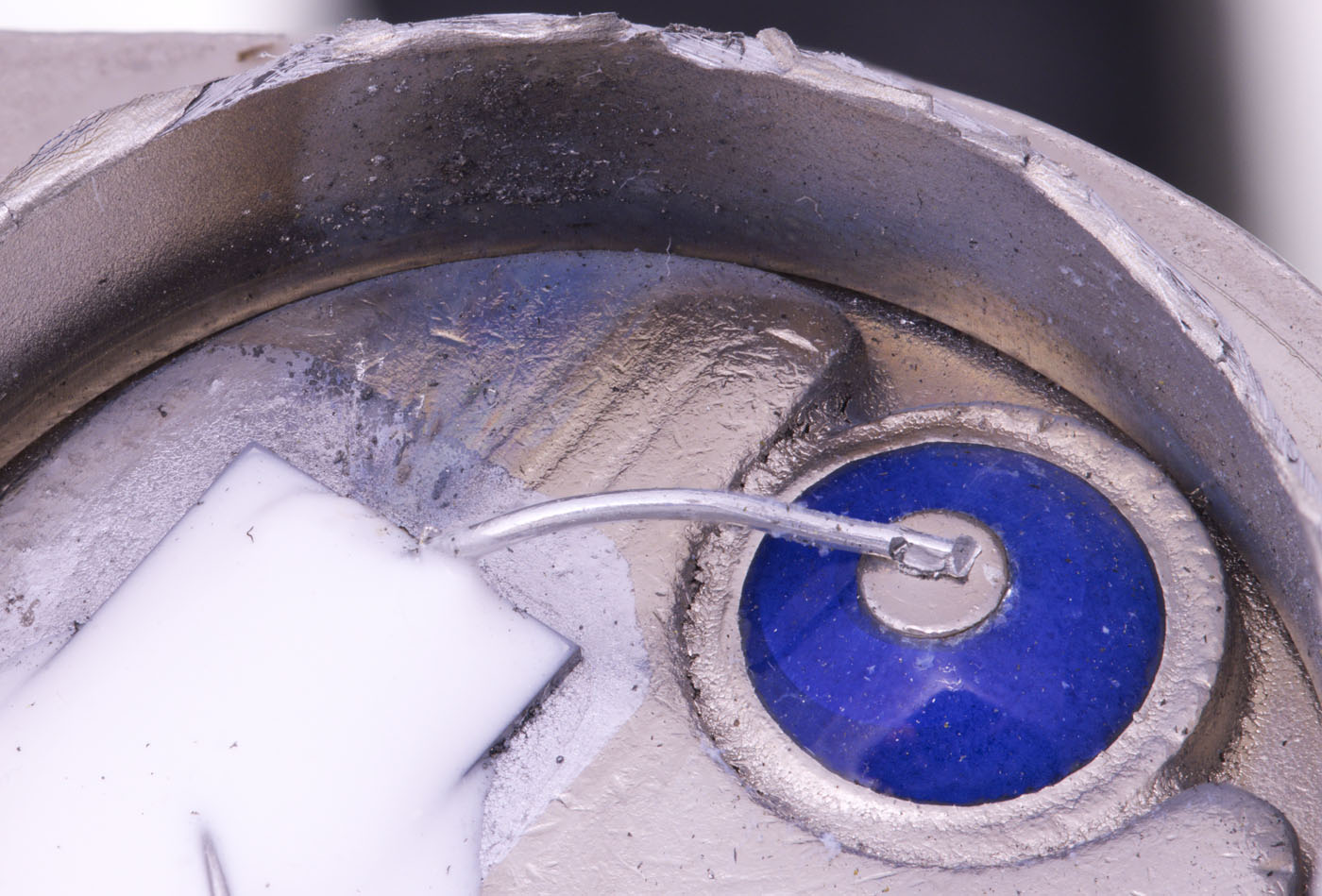
The white potting hides the massive damage to the transistor. A closer look reveals that hot particles have been ejected from the side. These have settled on the heatspreader and the lateral case wall.
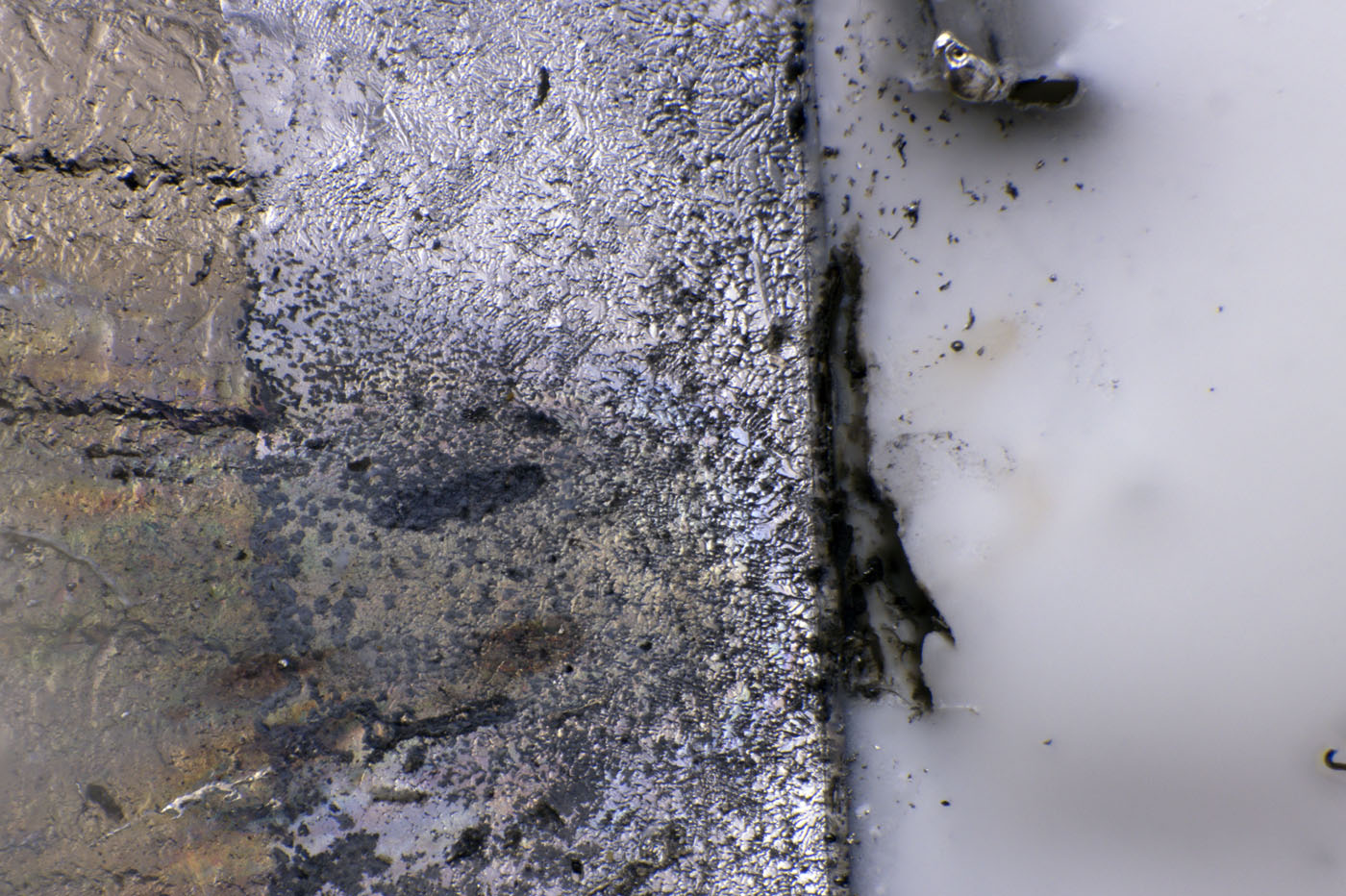
There is a dark rupture on the outer edge of the potting. According to the discolorations on the heatspreader, an arc may have burned there.
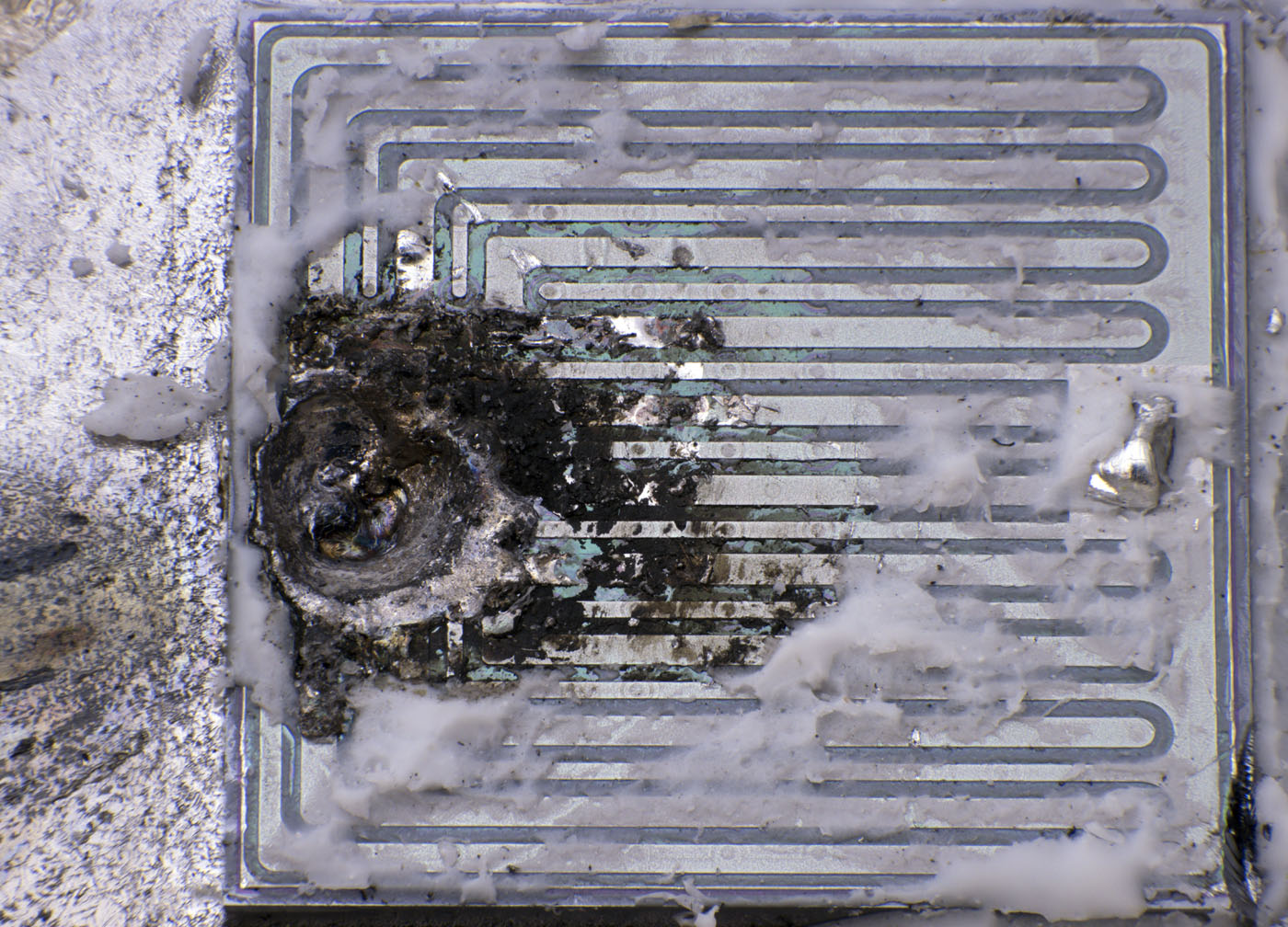
The die has an edge length of 6,1mm. The silicon-like potting is hard to remove. There is a crater where the bondwire contacted the emitter.
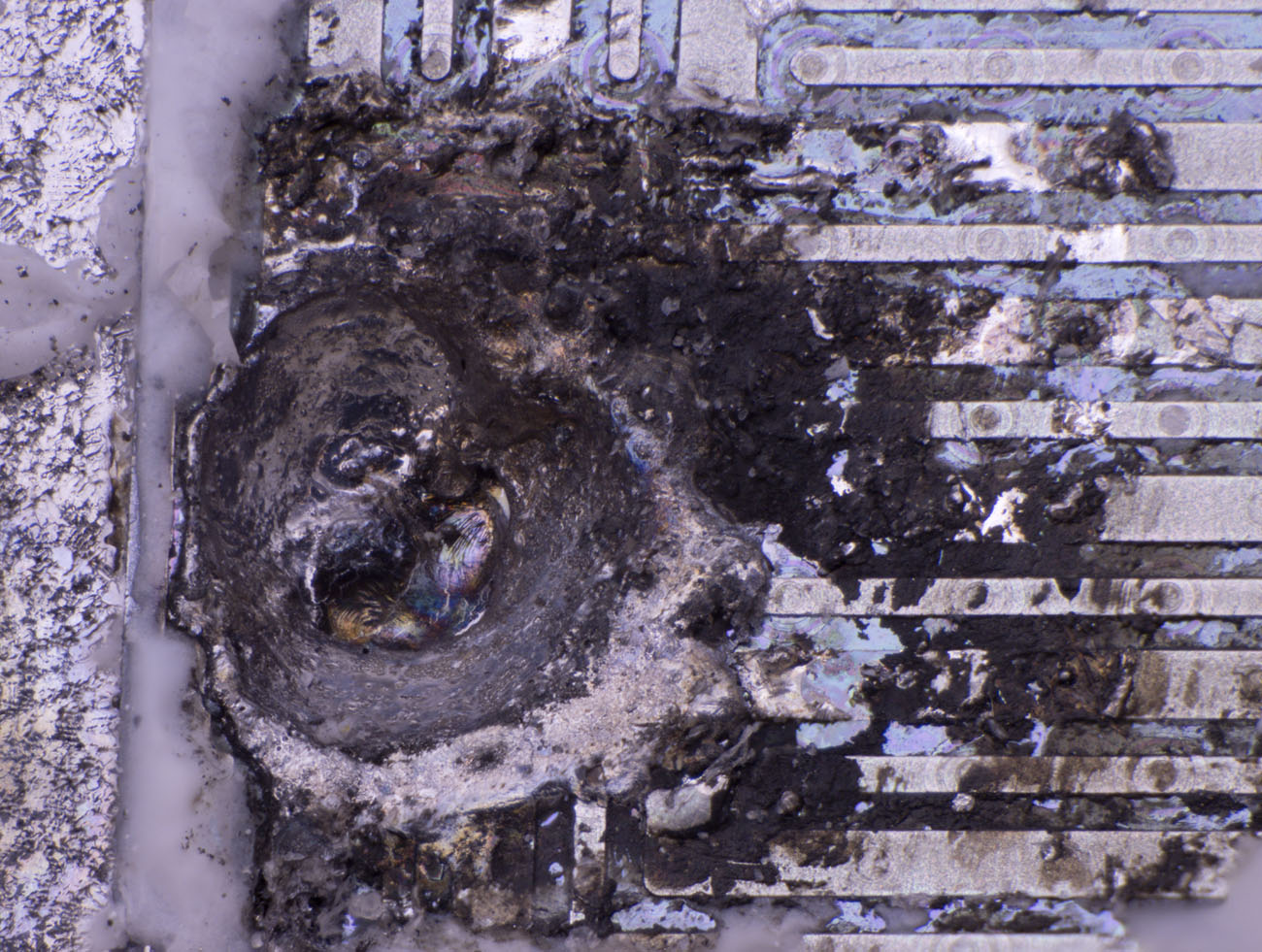
The current flow through the defective transistor has melted a crater into the silicon that extends to the heatspreader.
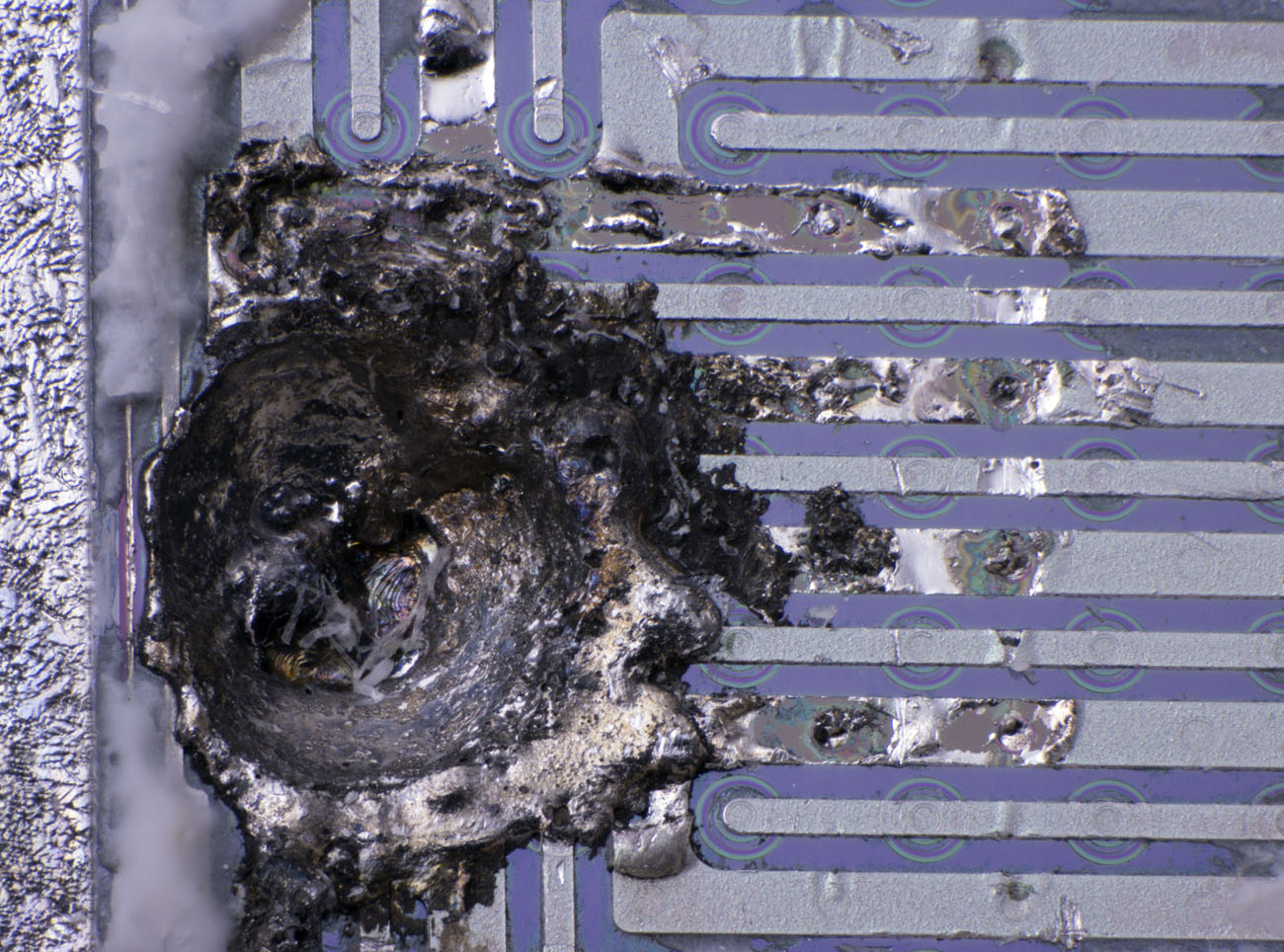
After further cleaning, it becomes clear that the transistor has a perforated emitter. The emitter completely covers the base and the contacting of the base takes place via round openings in the emitter layer. The large number of distributed base contacts ensures a very low-resistance connection. This allows the free charge carriers to be eliminated more quickly, thus increasing the switching speed. Further advantages are a low saturation voltage, a relatively constant gain factor even with increasing current and a comparatively late onset of avalanche breakdown (second breakdown).
Current flow across the emitter path has melted the metal layer outside the crater. The lower and upper edges of the image show that where the conductor is not completely melted the metal layer in the area of the round contacts has deformed.
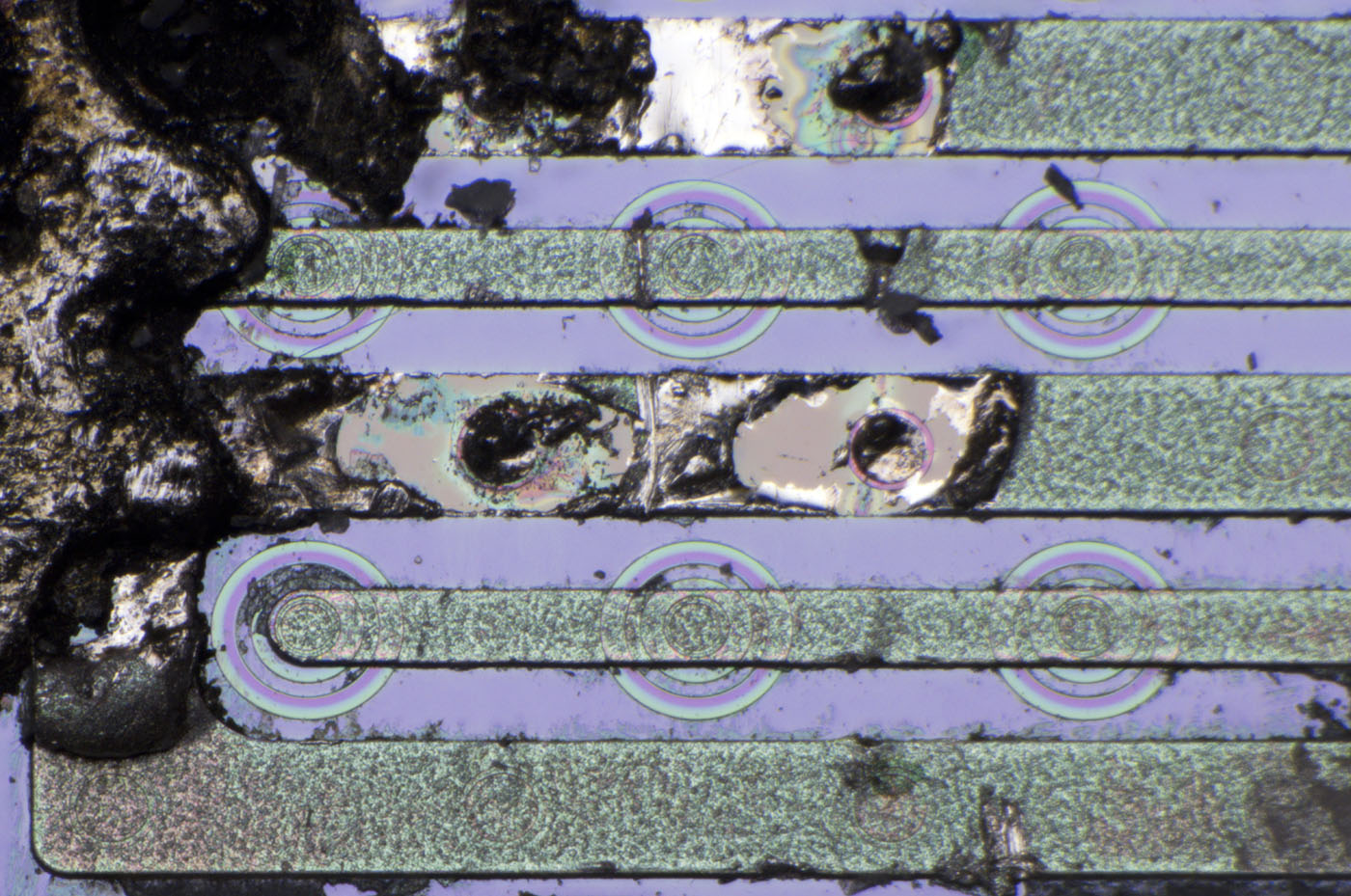
As with the BUX22 (
https://www.richis-lab.de/Bipolar08.htm) a surprising number of edges are found in the area of the base contacts. One could think that just two rings should be seen, the break-through through the passivation layer and the break-through through the emitter layer. Apparently, the contact areas have a more complex structure. Unfortunately, there is very little information about the exact structure of transistors with perforated emitter.
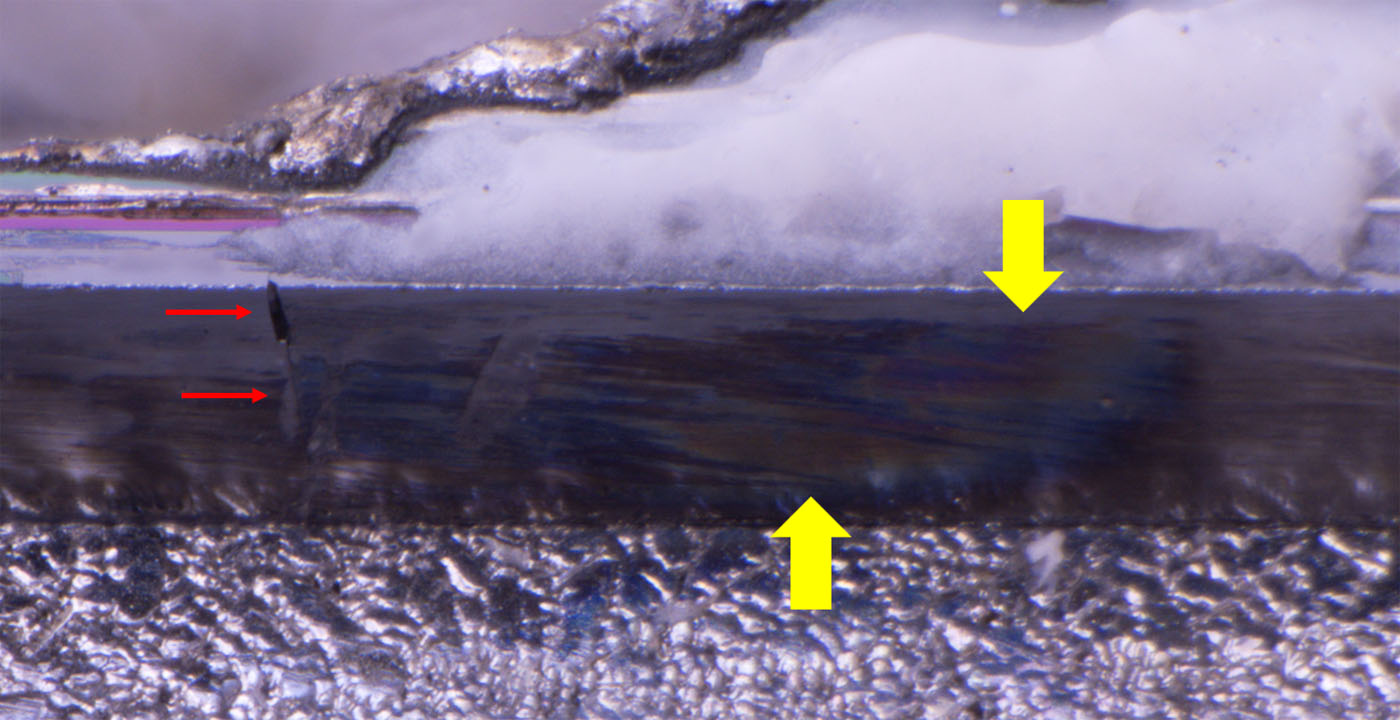
Discoloration on the side of the die (yellow) shows how high the local heat generation was. This also resulted in the silicon cracking (red).
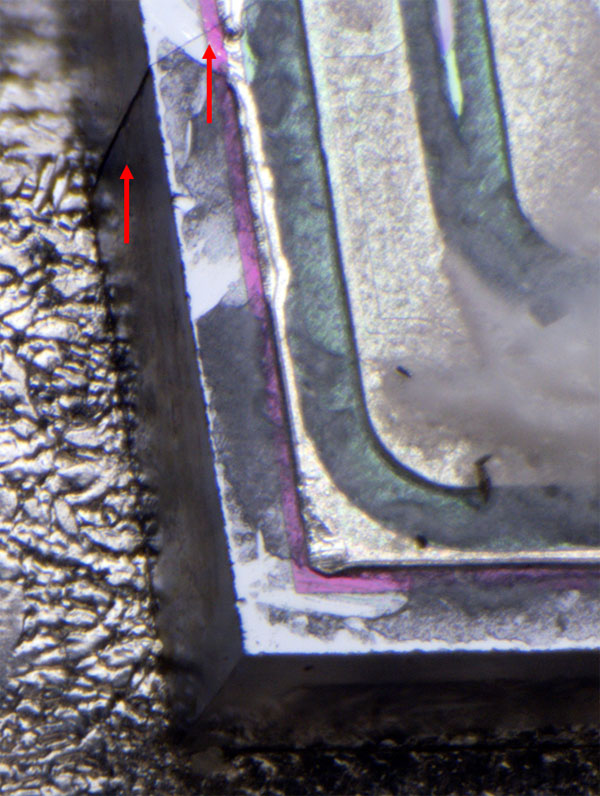
The crack becomes visible one more time in the lower area of the transistor.
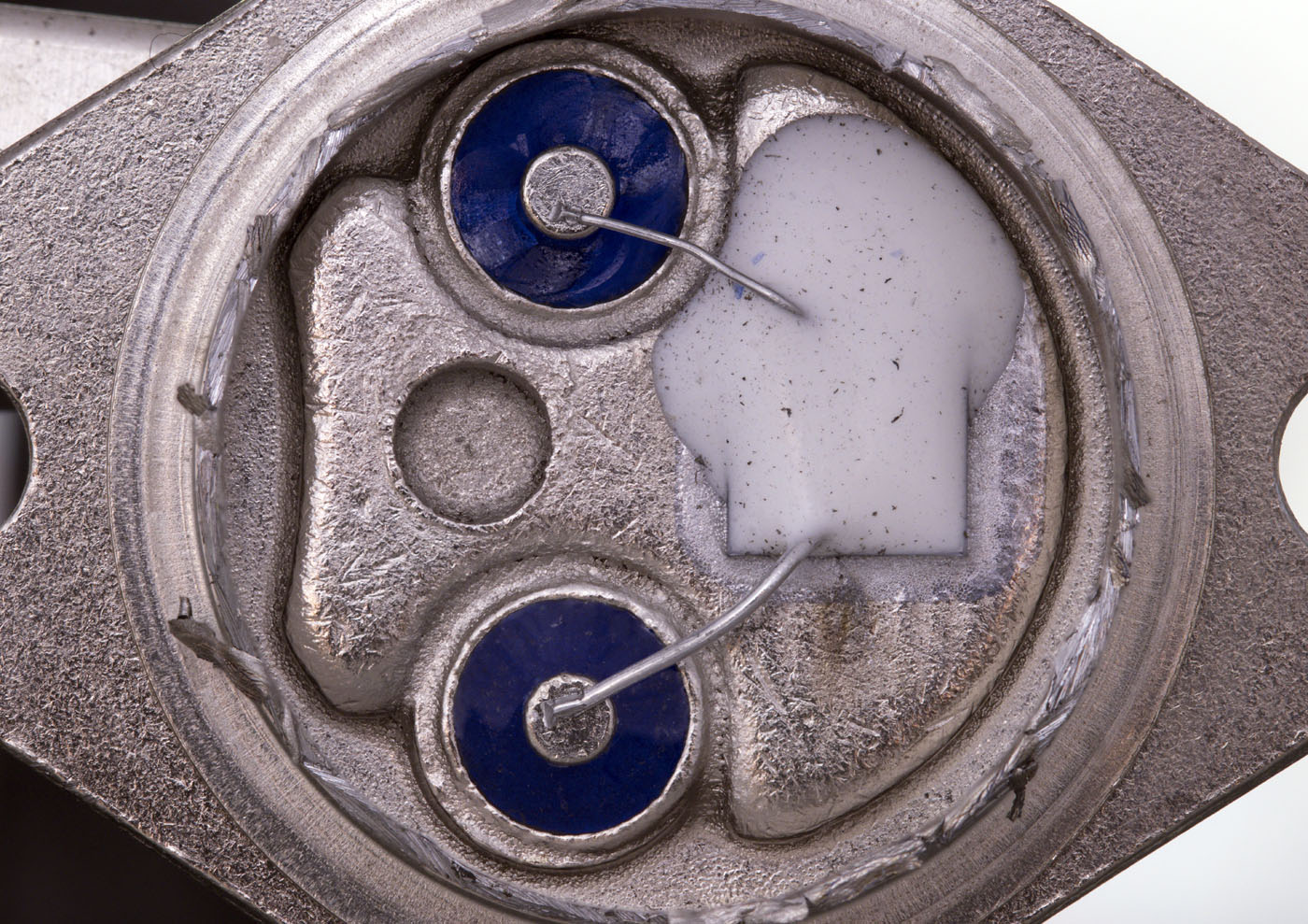
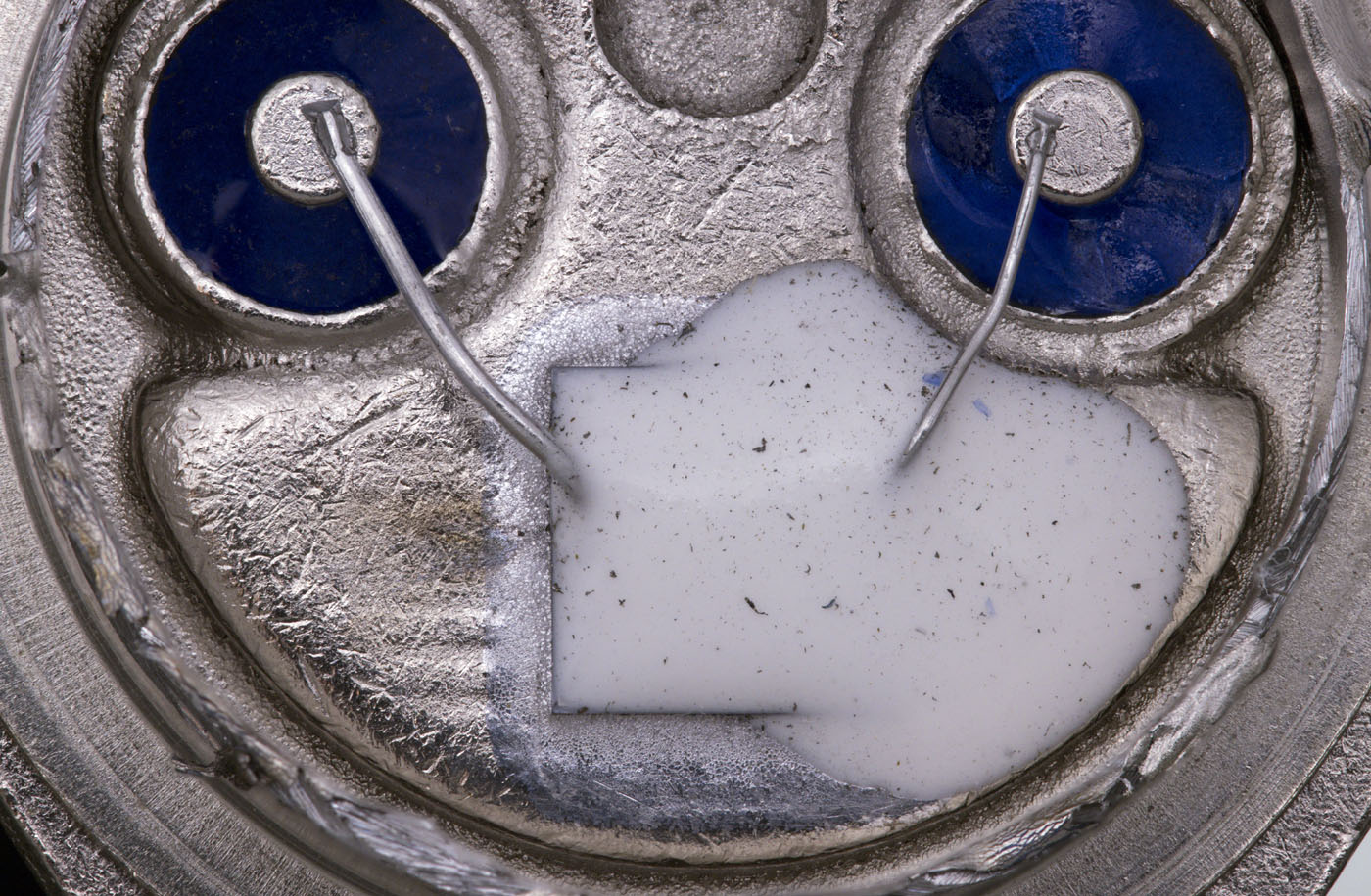
The second MJ15004 has an identical design.
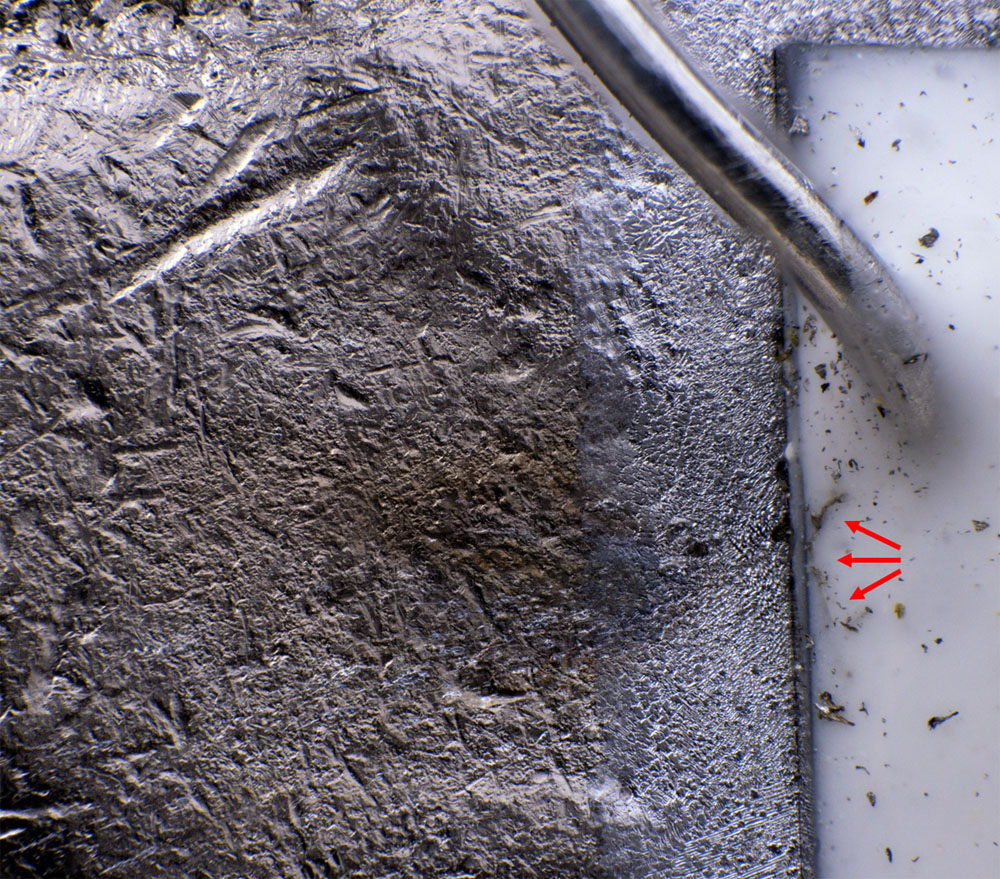
Here, too, there is discoloration on the heatspreader in the same area, where hot material has escaped through a crack in the potting (red).
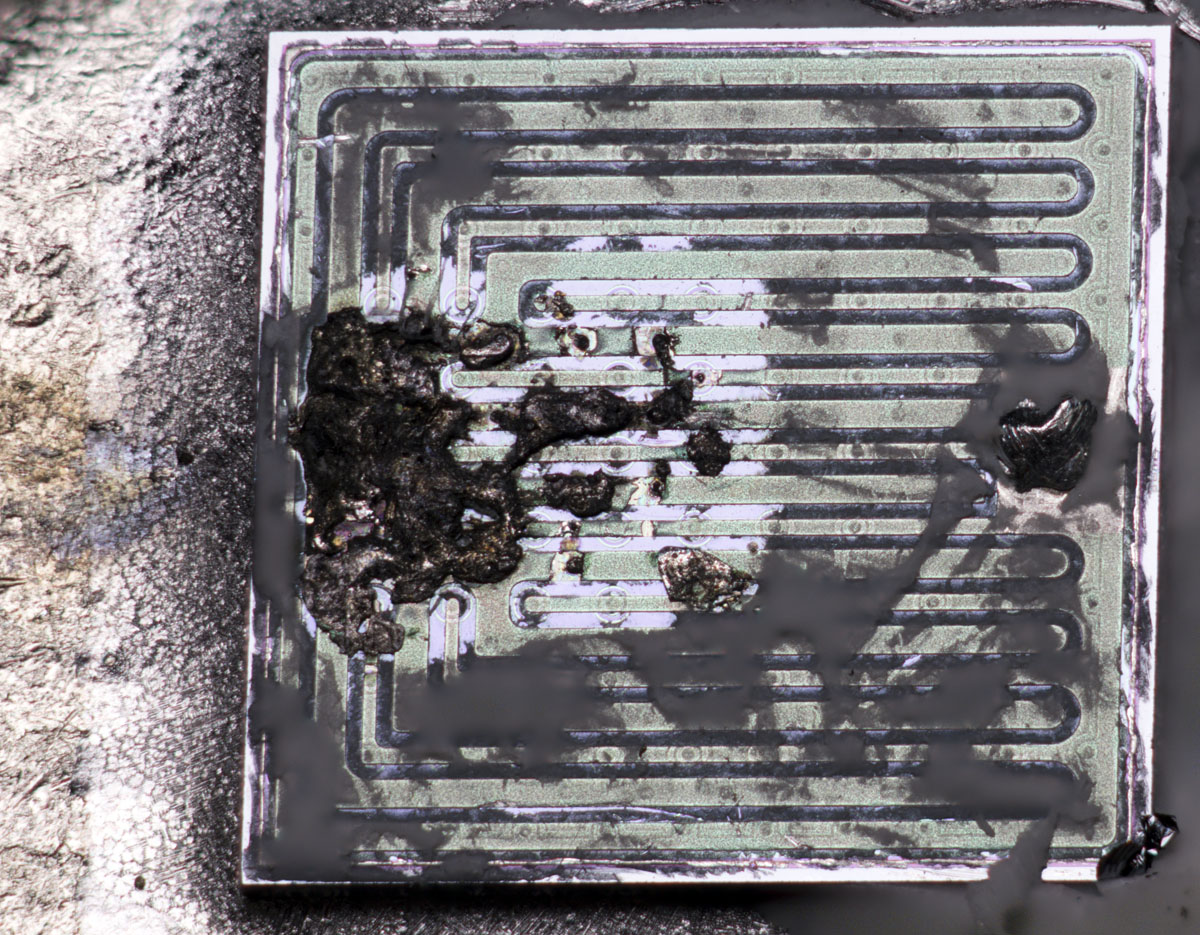
Removing the silicone also reveals massive damage in the contact area of the emitter.
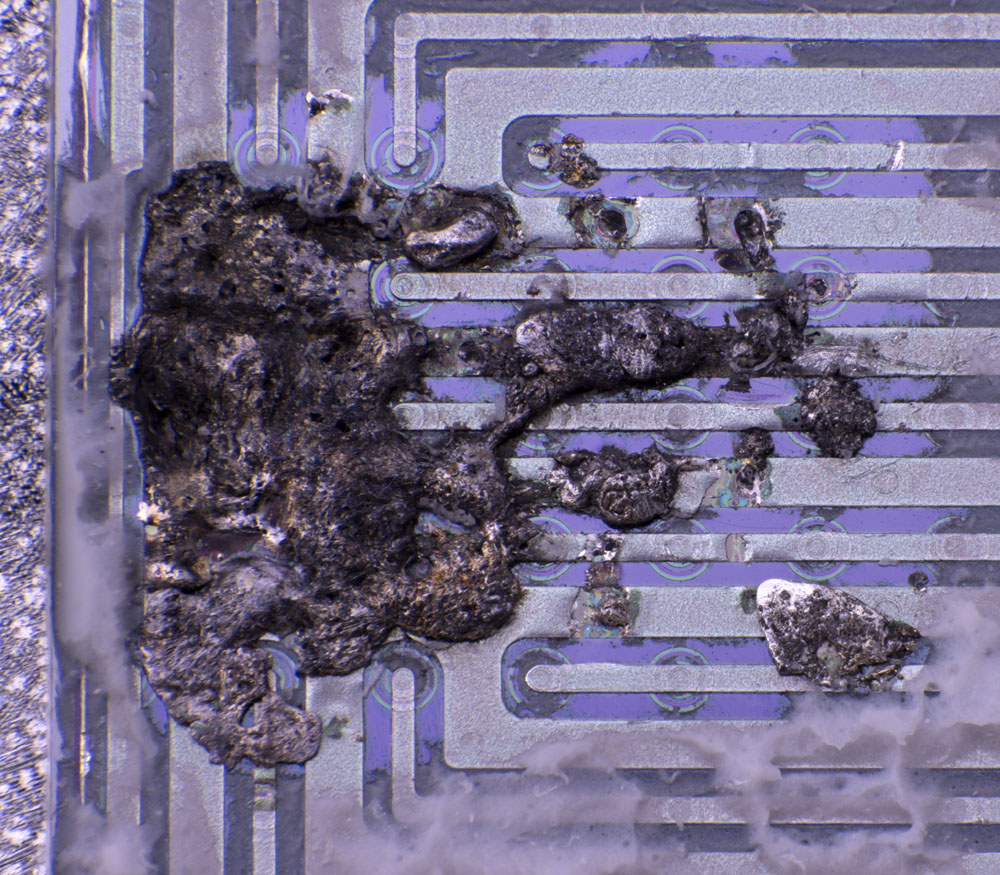
Compared to the upper transistor, the destruction is not as advanced here. The metal layer has melted and the silicon seems to have suffered a bit, but no crater has formed.
https://www.richis-lab.de/BipolarA33.htm 